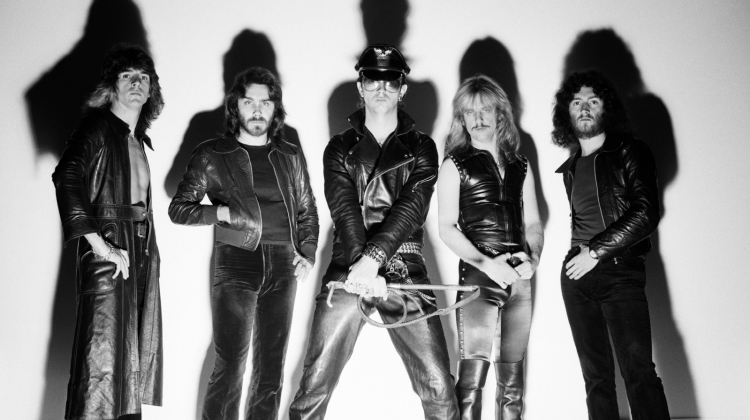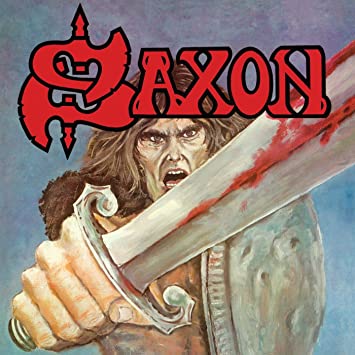Was metal in its original form a fundamentally new phenomenon? The answer to this question will in part depend on when metal could be considered a fully autonomous form of music. And establishing this – as I shall argue – is not as simple as declaring “Black Sabbath” to all and sundry. Metal’s upbringing was more stunted than many would like to acknowledge. But once this point is more widely accepted and understood we can begin to tell a story about metal’s formative years that goes beyond a mere list of facts and milestones. For instance, why does metal have such a complex relationship with the competing forces of regression and innovation? Why is metal considered a black sheep amongst post-war subcultures of the West?
The compulsion to become amateur historians is engrained in the psyche of metal fans. It’s rare-bordering-on-impossible to meet a fan that has no interest in delving back to 1970, to witness the creation myth for themselves in the opening tritone of ‘Black Sabbath’. To enshrine heavy metal’s birthing with that of Black Sabbath is certainly neat from a story telling perspective. Positioned as they were at the end of the 1960s, and coinciding with other ambitious offshoots of rock, all the pieces fit together a little too tidily from a narrative perspective.

There’s no doubt that the track ‘Black Sabbath’ itself was an aberration in rock as it had been to that point, an outlying specimen worthy of careful observation. This goes well beyond the raw sound that hits you after those opening three notes; it established a strong link with horror and occult themes, its use of the tritone and power chords cemented metal’s commitment to infectious malevolence imbued with primal energy, yet also grasping for more ambitious musical architecture than was common to radio friendly rock. This – combined with the many anecdotes and nuggets of trivia offered by the band themselves in regards to their influences and mindset at the time – has led every TV documentary and mainstream written history on the subject to fixate on this milestone, and work in a clear, unbroken narrative line from this point onwards.
But metal did not instantaneously explode outwards with a plethora of Black Sabbath clones after 1970. Their first six albums have been rightly immortalised, and they certainly thrust the Brummie quartet into instantaneous and universal stardom. But the fact that a great deal of metal’s formal music theory was enshrined in tracks like ‘Black Sabbath’, ‘Children of the Grave’, and ‘Symptom of the Universe’ leaves metal historians scrabbling round for other early acts from the 1970s, with a view to making a case for metal being a fledging genre as early as 1970. The true metallic nature of Led Zepplin, Deep Purple, and even such acts as Thin Lizzy and Blue Cheer are all played up for the sake of offering us a clear, linear evolution from Cream and Hendrix through to the first rumblings of NWOBHM.
But the truth is that the metallic elements present in these acts; the heavier guitar tones, the bacchanalian chaos, the virtuosity; all were stylistic outliers that remained safely contained within music that stuck to the conventions of blues and hard rock. And this point also goes for Black Sabbath themselves. Go back to any one of their records of this era and it becomes apparent that they were grasping for something just out of reach, whilst simultaneously hamstrung by the need to fill each album with plenty of familiar, old-fashioned rock ‘n’ roll tracks. For every ‘Sabbath Bloody Sabbath’ there was a ‘Sabbra Cadabra’.
Couple this with the fact that heavy guitar music was all but cast out into the wilderness by the mid-1970s, as people lost patience with its excesses and increasingly loose grasp on the working class experiences of the average listener. This meant that heavy metal’s growth was stunted in the immediate aftermath of Sabbath’s rise to glory.
It was not until the likes of Judas Priest, Motorhead, and Rainbow sparked the fire that was to be known as the New Wave of British Heavy Metal that these scattered stylistic outliers were formalised into a self-conscious style. “Heavy metal” as a term was already in use by the late 1960s for sure, but none of the acts from that time embraced it willingly, and even outright rejected it.
More important than a term’s absolute origin is the moment that a genre self-consciously embraces said term. The musicians themselves are the ultimate masters over a genre’s ontology, and are therefore able to dictate its true meaning via the content they generate far more than any journalist drawing descriptive borders around it. If a band can align their music with a particularly sticky piece of terminology, their style and identity as musicians will resonate far wider in the collective unconscious than any lengthy rhetoric attempting to do the same.
When Judas Priest actively embraced heavy metal, both sonically and aesthetically, laying down dress codes and imagery in the process, it forced scribes surrounding the scene to desperately scramble for new parameters and terminology to verbally capture this style. But by then it was out of their hands as commentators. The battle lines had been drawn. Other artists were forced to define themselves in terms of their opposition to or open armed embrace of heavy metal. This moment did not come until around 1976 with the release of ‘Sad Wings of Destiny’ however. And even then, in terms of guitar music that caught the attention of the mainstream, Priest were something of an outlier.

Were they back-peddling on the proggy direction Black Sabbath were taking in the mid-70s, taking things back to straightforward hard rock? Or had they stumbled on something entirely novel? To answer this it’s important to consider the sense of stagnation that gripped rock in the mid-70s after the euphoria of Woodstock. Prog offered “music about music”, too obfuscated and protracted for most, but also the closest thing heavy rock had to an experimental border at the time. But many had lost patience with these sonic laboratories, and demanded music of grounded immediacy and accessibility. This found its voice in the fledging punk movement soon to have its day. Between these two poles, glam, 50s revivalism, and a flat-out rejection of guitar music altogether in the form of disco, all placed competing and contradictory expectations on what it meant to play rock ‘n’ roll.
Taking Judas Priest’s classic trilogy starting with 1976’s ‘Sad Wings of Destiny’ as a benchmark, early metal subverted these dilemma’s by picking neither path. The motivational core of this music would be oddly centrist in outlook. Embracing the energy and urgency many craved, but encouraging near limitless ambition when it came to virtuosity and compositional architecture. Metal was able to contain these two contradictory impulses by embracing unselfconscious theatrics, romantic sensitivity, and an active celebration of Wagnerian bombast considered vulgar by prog-heads, and outright ridiculous by traditional rock purists. But something in this strange brew resonated with a third audience.
Everyone that followed in Priest’s footsteps – from Iron Maiden in London, to Saxon in Yorkshire, Raven in Newcastle, Stourbridge’s Diamond Head, and even Black Sabbath’s second wind under Dio’s boundless enthusiasm, to Cirith Ungol in America, and Canada’s Anvil – would actively embrace this formula, one that was able to contain both the barbarian and the philosopher within its parameters.
Whatever divergence in quality between the metal acts that sprung up in the late 1970s, a duality of purpose is written in the very name given to these fledging acts; the New Wave of British Heavy Metal. A new wave implies an old wave. This old wave was thought to be the heavy rock giants that sprung up in the late 1960s. Although not self-consciously metal, their brand of heavy rock was loud enough and bombastic enough to leave commentators striving for new language to describe it, whether bands accepted the moniker or not is by the by. What matters is the fact that the bands were too diffuse, their momentum too stunted, that metal’s bloodline was all but snuffed out by 1972, only to be resurrected in 1976.
The fact that NWOBHM bands actively embracing their label is symbolically significant. It not only illustrates the stylistic project of these bands, combining the raw energy and immediacy of rock (as embodied by Motorhead) with a higher standard of musicianship than punk. But the embrace of this label was also a cultural marker. To more serious music fans, metal embraced the worst of both worlds, and was forever banished as a failed state among subcultures. Its appropriation of biker-gang tribalism and strict dress codes of denim, leather, and long hair as distinct from both punk and the hippie movement of the 60s only furthered the impression that metal was an amalgamation of all the worst facets of counter cultures to date.
This idea is made even clearer if we look at these competing forces within metal symbolically in terms of Motorhead and King Crimson (because Apollo and Dionysus were taken). Within the Motorhead side of heavy metal in the late 1970s was a commitment to pure rock ‘n’ roll, kindred spirit to punk, averse to new labels and the esoteric ambitions of progressive rock, exhilarating and urgent. The King Crimson side was the opposite. Experimental often to the point of absurdity, a near limitless ambition for musicality, lengthy experimental tracks that ditched verse/chorus structures in favour of narrative arcs, and a complete lack of self-consciousness.
This strict attitude to “real” grassroots metal values combined with the “right” form of musical progress has led to a minefield of internal debates and highly complex codes of conduct that stretched well beyond the music itself; into fashion, art, and fans’ expectations of the musicians on a personal level. But beyond that, the reason metal remains a confusing isolationist state amongst contemporary subcultures is the fact that metal presents guitar music at its most unselfconscious, and hence its most creative. No alleyway is left unexplored, no affectation too vulgar, and no artistic statement is considered too ambitious. There is also no room left for non-authentic avenues of artistry via the ironic or the sarcastic.
The actual NWOBHM bands were largely unable to resolve this “take both paths” approach into raw musical output; with most albums at the time offering a very binary experience of no-nonsense rock alongside epic, borderline neoclassical compositional architecture not seen in contemporary music. But as the mid-1980s rolled around, the possibility of resolving this contradiction within the music itself became realisable.

Metal’s Retromania Part III: the eternal return
Metal’s Retromania Part IV: The Icarus factor
Metal’s retromania Part V: Whither is fled the visionary gleam?